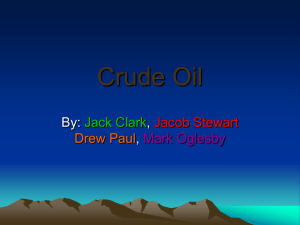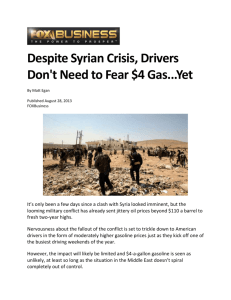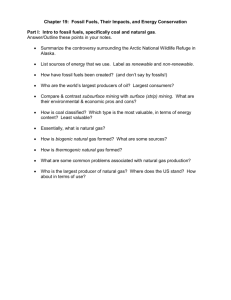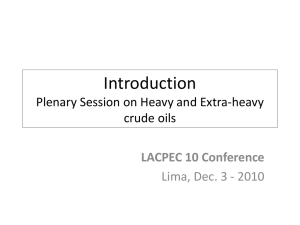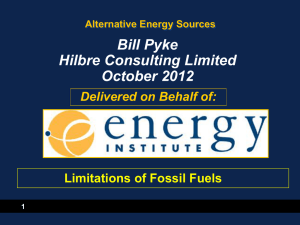Fossil fuels (oil and natural gas)
advertisement
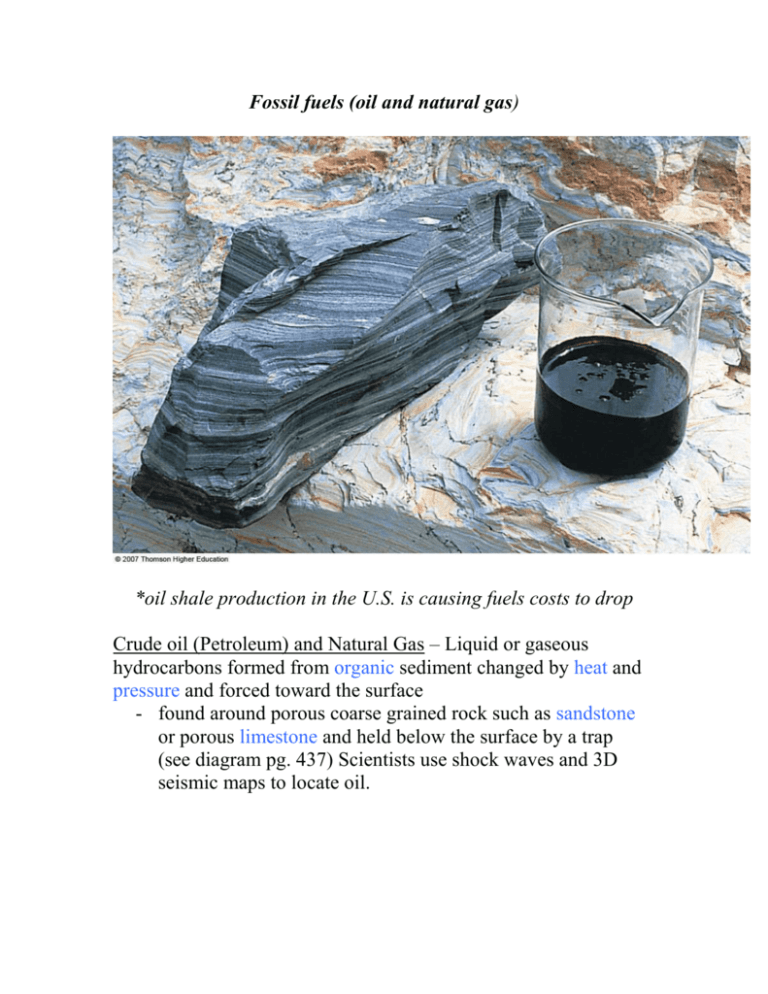
Fossil fuels (oil and natural gas) *oil shale production in the U.S. is causing fuels costs to drop Crude oil (Petroleum) and Natural Gas – Liquid or gaseous hydrocarbons formed from organic sediment changed by heat and pressure and forced toward the surface - found around porous coarse grained rock such as sandstone or porous limestone and held below the surface by a trap (see diagram pg. 437) Scientists use shock waves and 3D seismic maps to locate oil. Oil from the ground is known as crude which must be refined – The process of heating the crude to separate and collect components which are processed to produce gasoline and heating oil, or to make plastic, Styrofoam, jet fuel, lubricants for transportation and many other products. sweet vs. sour crude – sweet is easier to refine and worth more light vs. heavy crude – light produces more gasoline than heavy - wells are drilled to extract crude from the ground- wells hit peak production when the pressure drops (U.S. oil production peaked in the 70s’) - Texas, Louisiana, California, and Alaska produce most of the nation’s oil (Alaska and offshore regions still have untapped reserves. Should we use It?) – What is ANWR? – pg 442 - close to 70% of oil in U.S. is used for transportation (gasoline and diesel) - U.S. is using ethanol (grain alcohol) as a gasoline extender or substitute -U.S. uses 21% of oil produced globally 31 producer – due to oil shale How much oil is left? Nobody knows because it depends on many factors. At the current rate of use it is the least abundant fossil fuel. - Foreign oil prices are controlled mostly by (OPEC) – 12 countries. They have 72% of the world’s oil. – Venezuela has 18% followed by Saudi Arabia with 16% - World consumption is close to 70 million barrels a day. What will happen when the world reserves hit peak production? Natural Gas - some new reserves are still being found and should last for at least 120 years at the current rate of use. - more plentiful than oil but less than coal - it mostly consists of methane CH4 - areas that contain oil usually contain natural gas - consumption began after the first welded pipeline in 1925 - U.S. demand grew rapidly after WWII - consumption has been rising since 1986 (28% of energy in the U.S. - still used mostly in many industries as an energy source - used in preparing many products (fertilizer) and is being used - Used more for electricity and transportation (CNG vehicles – Penncrest) - transported by pipeline or condensed for ships or trucks (pipeline system throughout the U.S.) - it is the cleanest burning and highest heat producer of all fossil fuels – most expensive - U.S. is the top consumer of natural gas - Russia has the largest reserves (21%) Environmental Impacts of Oil and Natural Gas - Drilling causes destruction and subsidence (sinking) of land when oil and gas are removed – See Fracking article Fracking video - Surface and ground water are polluted during runoff and infiltration - Offshore drilling of oil causes seepage into the ocean - Shipping accidents can cause massive oil spills in the ocean killing marine life - Ex. The Deepwater horizon or BP oil spill – A sea floor oil gusher occurred after a platform explosion – It flowed for three months dumping 205.8 million gallons of oil into the Gulf of Mexico - Exxon Valdez crashed in Prince William Sound in Alaska in 1989 releasing 250,000 barrels of oil in the sea - The burning of oil (gasoline) and natural gas causing air pollution



